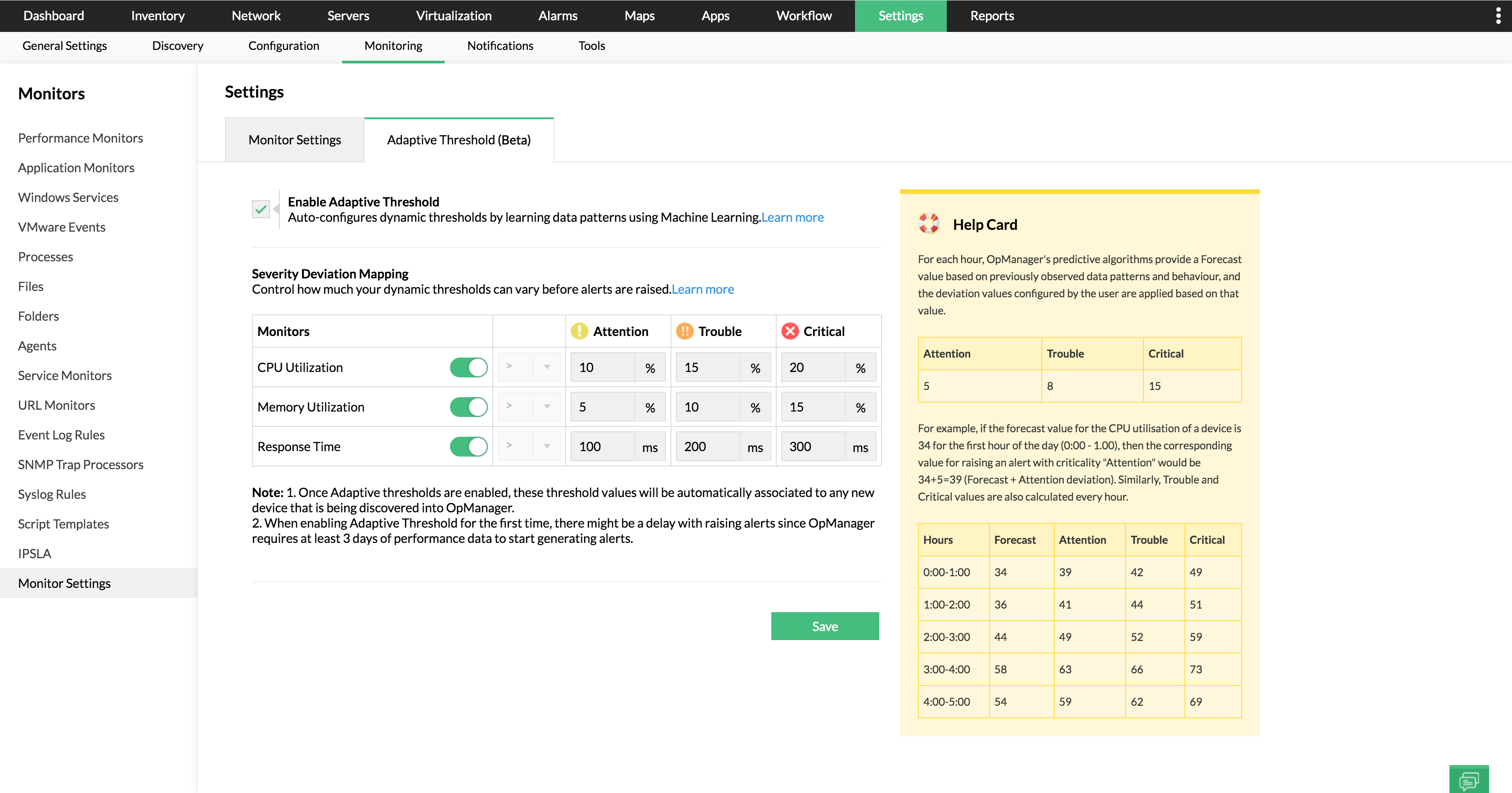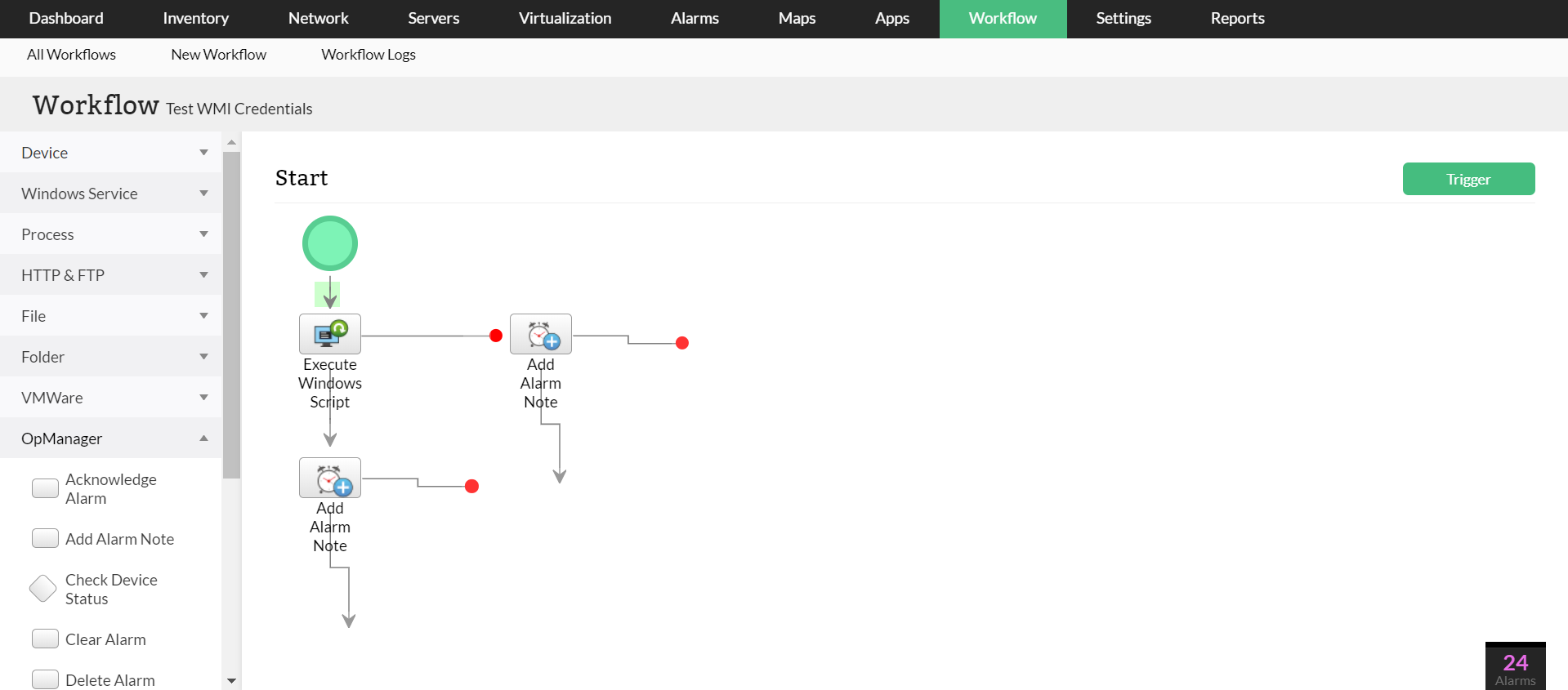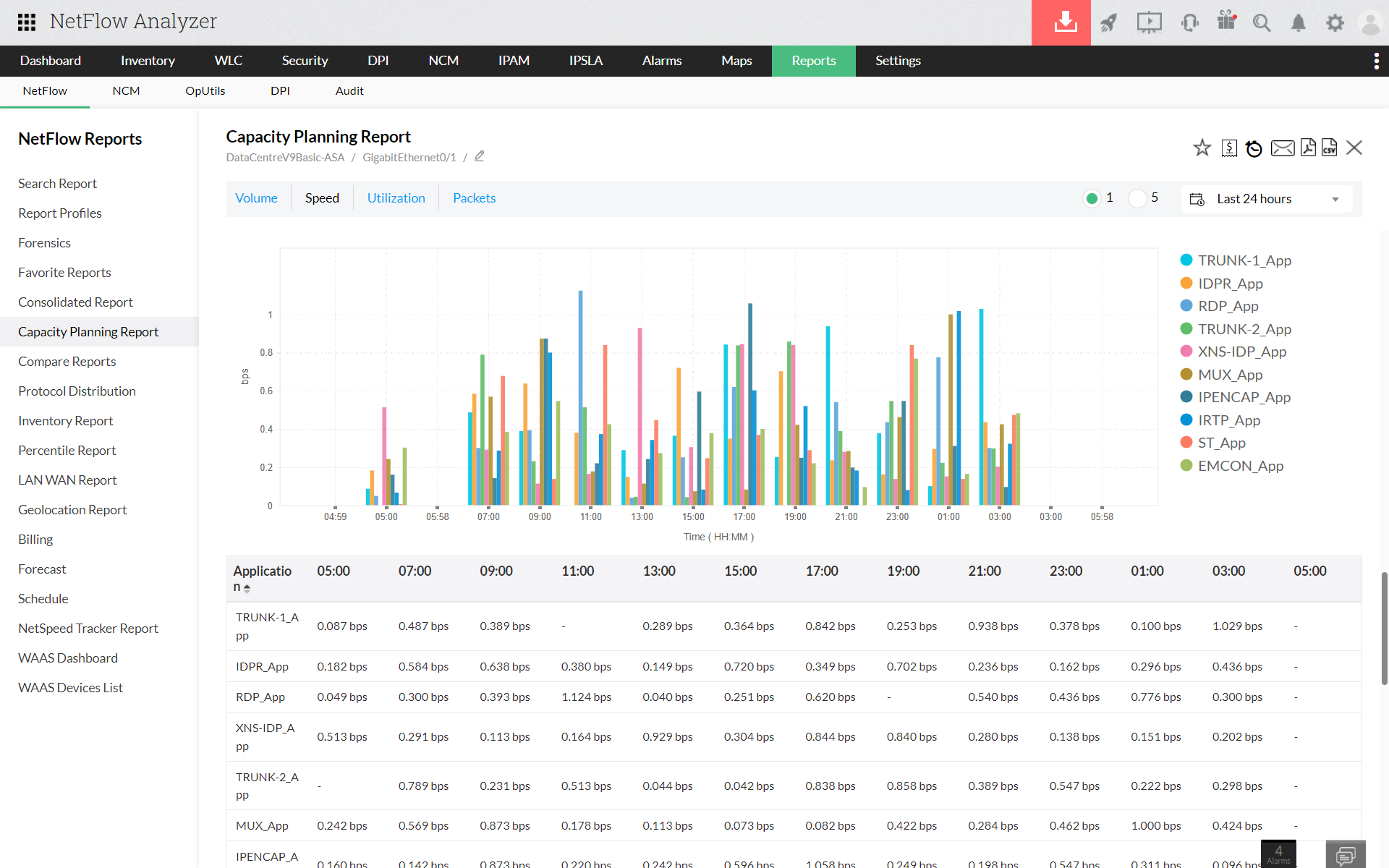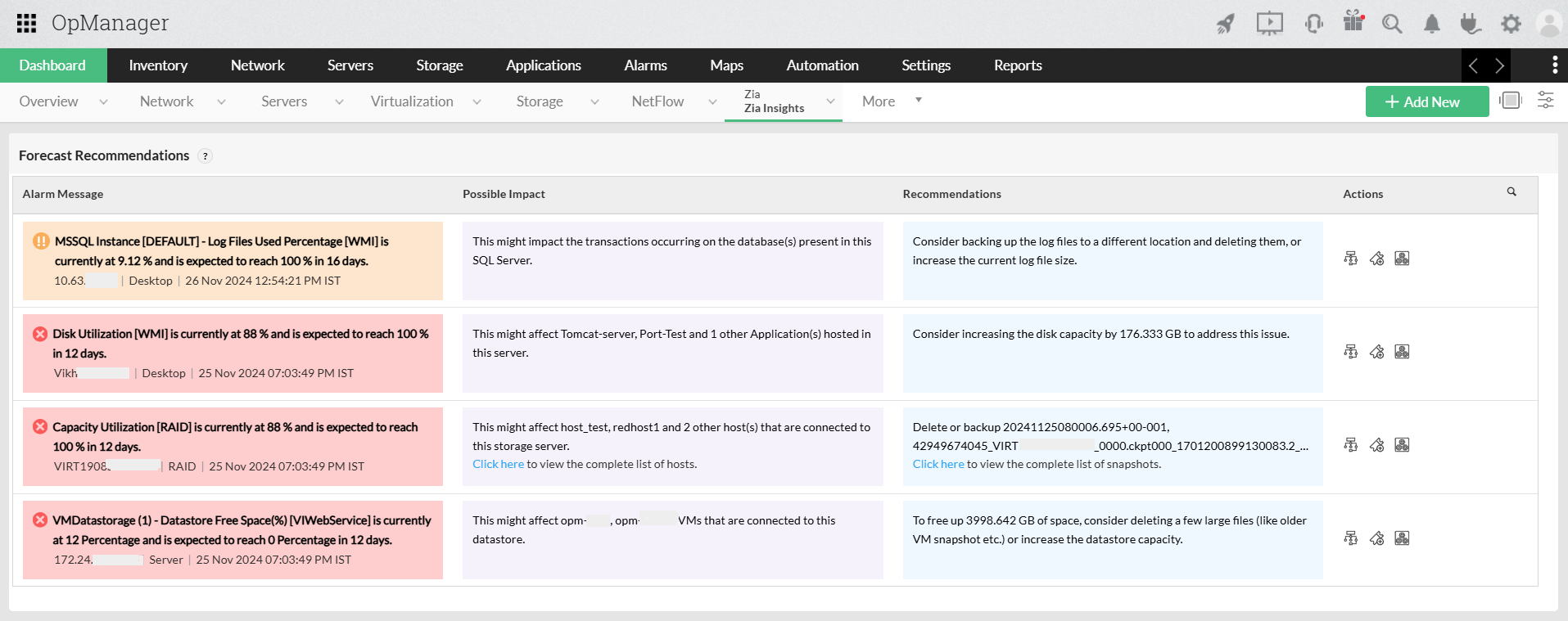IT infrastructure automation
Agile, efficient, and scalable—these are the three core qualities that IT operations are expected to embody. With this in mind, what proves to be the most commonly sought-after approach in the pursuit of building better ITOps is automation.
What is IT infrastructure automation?
IT infrastructure automation is the process of reducing human intervention by using advanced technical and automation techniques to control and manage the software, hardware, storage, and other network components that constitute an IT infrastructure. As the same with any new technology adaptation, the core objective here is also to build a highly efficient, flexible, and reliable IT environment.
Why automate your IT infrastructure?
Offering seamless digital experience to both customers and employees has become a business imperative. Behind the screen, this translates to maintaining a high-performance network around the clock without increasing operational costs.
Yet attaining this critical combination of objectives is not possible without automating operational tasks and work-arounds that are prone to errors, inefficiencies, and inconsistencies. This holds particularly true for enterprise IT as the degree of these risks increases at scale. This makes automation the holy grail in modern ITOM.
Benefits of automation
Adopting automation in ITOps with the right strategies and tools will help you build an IT environment that is:
- Error-free: The idea is to reduce human intervention because of the error-proneness that it entails. By automating your IT infrastructure, you are minimizing the risk of errors that lead to network issues, such as misconfigurations that cause security breaches.
- Resource-efficient: What fuels a network is its resources, such as memory, storage, CPU, and bandwidth. Managing these means avoiding over- and under-provisioning, optimizing based on demand, and forecasting your future needs. All this must be done 24/7, which simply defies human capabilities. However, automation can help you run a network with efficient resource management thanks to its incredible data processing prowess.
- Cost-efficient: With a reduced risk of errors, an IT environment is less likely to face network disruptions, thus preventing expensive business interruptions. Also, optimized resource utilization and accurate forecasting of capacity needs directly contribute to efficient spending of the IT budget.
- Conducive to high-value initiatives: Automating time-consuming and low-value operational tasks will allow IT teams to focus on high-value IT strategies and initiatives that directly and indirectly affect business growth. Intelligence-driven challenges can nurture a gratifying work culture, which increases employee retention too.
Automation possibilities in an IT infrastructure
The following are a few core areas in ITOps where applying automation can yield high-impact results.
Network provisioning
Constituting a huge part of managing your IT infrastructure, network provisioning involves getting all the network components in place and ready to use. This includes deploying hardware, installing software, configuring devices, setting up notification profiles, and making sure everything is up and running. But manually performing all these tasks every time a device gets added is mechanical and highly repetitive, especially on an enterprise scale.
However, an IT infrastructure automation tool automatically performs these tasks whenever a device gets added, based on the device details.
You can automate everything from device discovery and device configuration to the addition of monitors and to the addition of devices to corresponding business views.
So, automated infrastructure provisioning saves network engineers a lot of time and reduces the risk of errors, resulting in a more stable network.
Configuration management
One of the important aspects of an IT infrastructure characterized by low error tolerance is device configuration, which shows the importance of automation in configuration management. Device configuration management doesn’t end in the pre-monitoring phase. When the need arises to change configurations to enhance efficiency, fix faults, improve security, or ensure compliance across numerous devices, automation components like command scripts come in handy by automating bulk configuration changes.
Also, you can use automation in the network configuration backup process, a key configuration management procedure for maintaining network stability. Along with performing scheduled and manual backups, an automation tool helps by triggering a backup whenever it detects any device configuration change. This change-triggered backup feature ensures no configuration change goes unrecorded, resulting in more consistent network services.
Fault management
Fault management is meant to be as proactive as possible to avoid any network disruptions, from minor to costly. Here, being proactive means getting notified in advance about any potential network issues. Automation can help you discover such bottlenecks before they disrupt the network.
For example, any network has a risk of a unique IP address being allocated to more than one device. If one of them is a critical device, this will not only affect it but also the dependent devices, cascading to become a network catastrophe. A network management tool with an automated scanning capability can detect such conflicts and alert you in advance.
Additionally, you can automate processes that do not demand much human intelligence, like L1 troubleshooting and routine maintenance tasks. This will increase the overall efficiency of operations in terms of time, effort, and cost.
Alert management
In dynamic IT environments, the one-size-fits-all approach does not hold true for configuring alert thresholds. Also, continually modifying the thresholds manually based on the usage across all devices is close to impossible.
A proven way to sort out alert thresholds is leveraging ML-based automation. It observes the historical data of usage trends, such as for the past three months, and automatically configures thresholds with reliable values. Besides being time-efficient, this is an effective way to prevent false positives and the concomitant alert fatigue.
Similarly, critical alerts cannot go unattended for a long time, in which case, you can leverage notification automation, whereby unattended alerts will be escalated based on escalation rules after the specified time.
Capacity planning
As with alert thresholds, you can also apply ML and statistical techniques to aid capacity planning. Based on the data on resource consumption, traffic patterns, and bandwidth utilization, automation can help you with insights into the future usage patterns. These insights can become even more functional with a report that forecasts future resource crunch, facilitating informed capacity planning and resource provisioning. This also allows IT teams to spend their IT budget efficiently.
Challenges in IT infrastructure automation
People: Automation, like any other innovation, has its own challenges in terms of people, processes, and technology.
As less technical tasks are likely to be automated first, it might call into question the job security of your workforce. This can be addressed by upskilling your employees in advance through training them to perform processes that are far from being automated.
For advanced automation approaches like AIOps, employees need to be trained in ML- and AI-based skills. Though they need not be masters, they should be aware of how ML and AI models work and how to leverage data with them.
Process: Automating a process makes ITOps more efficient, but only when the process or work-around is well-defined. A poorly defined automation process leads to operational inefficiencies.
Also, automation involves managing huge volumes of data, introducing the need for an effective data management process. The structure and functioning of your organization directly impact how you manage data.
For example, a decentralized organization (where departments function as separate entities) risks developing data silos, which impair automation measures like cross-domain data ingestion. So, avoiding data silos by centralizing domains in terms of data collection and collaboration will favor automation efforts.
Technology: Choosing the right automation tool is crucial as it needs to integrate well with your legacy systems. Even when vendors claim that their tools run on a plug-and-play basis, there's no guarantee that they will work with operational context. Worse, a tool may turn out to be counterproductive for your ITOps in terms of both operations and spending.
Also, automation involves managing huge volumes of data, introducing the need for an effective data management process. The structure and functioning of your organization directly impact how you manage data.
A sensible approach to choosing an automation tool is to look for an infrastructure management solution with built-in automation features, as opposed to plug-ins and integrations, for contextual and pragmatic capabilities.
How does OpManager Plus facilitate infrastructure automation?
OpManager Plus' full-stack observability solution with its advanced IT operations management and observability capabilities will help you with the following.
Manage your dynamic environments with adaptive thresholds
With the help of ML and AI, OpManager Plus observes the constantly changing values of performance metrics, forecasts highly reliable values, and sets thresholds automatically. Learn more
Automate your routine maintenance and L1 fault management tasks
With OpManager Plus’ drag-and-drop workflow automation builder, you can automate your routine maintenance and L1 fault management tasks, which by nature are resource-intensive and laborious. Unlike a third-party workflow automation tool lacking tight integrations, OpManager Plus’ workflow automation builder is a built-in feature with robust capabilities. Learn more
Forecast resource crunch and proactively provision your network
OpManager Plus' helps you determine the enterprise's bandwidth needs to accommodate the growth over a period of time with its capacity planning reports and also decide on the changes to be implemented. Learn more
Perform error-free and time-efficient configuration changes
To fix faults, ensure security, and optimize performance, you can automate configuration changes across devices in bulk using OpManager Plus’ Configlets. These are configuration script templates that will save you time and save your network from the risk of errors. Learn more
Simplify IT Management with the AI-Powered Zia Dashboard
The Zia dashboard leverages smart insights and proactive suggestions to help admins identify bottlenecks, predict failures, and streamline troubleshooting processes. Learn more
Manage your complex IT infrastructure with ease. Try OpManager Plus now!
Download for free




